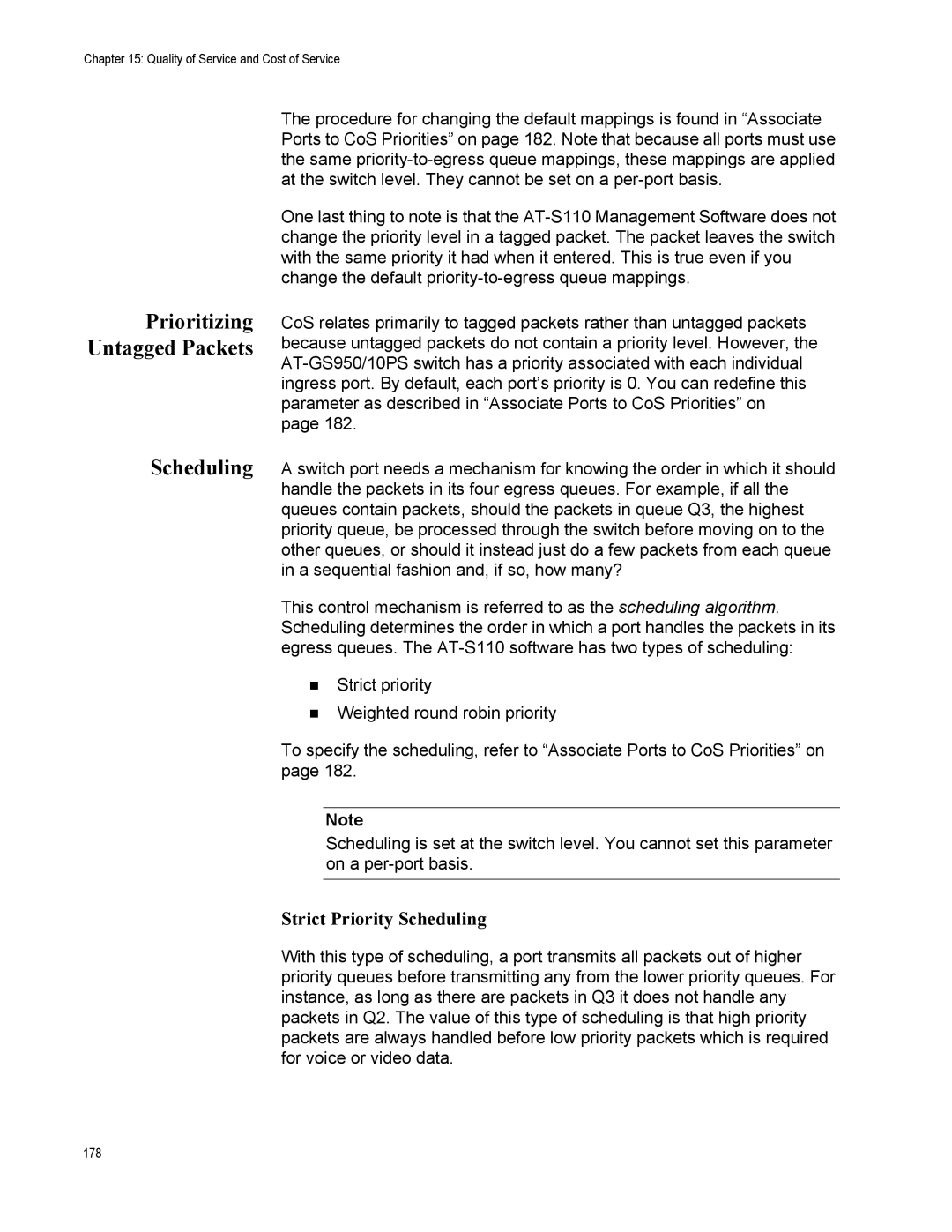
Chapter 15: Quality of Service and Cost of Service
Prioritizing Untagged Packets
Scheduling
The procedure for changing the default mappings is found in “Associate Ports to CoS Priorities” on page 182. Note that because all ports must use the same
One last thing to note is that the
CoS relates primarily to tagged packets rather than untagged packets because untagged packets do not contain a priority level. However, the
A switch port needs a mechanism for knowing the order in which it should handle the packets in its four egress queues. For example, if all the queues contain packets, should the packets in queue Q3, the highest priority queue, be processed through the switch before moving on to the other queues, or should it instead just do a few packets from each queue in a sequential fashion and, if so, how many?
This control mechanism is referred to as the scheduling algorithm. Scheduling determines the order in which a port handles the packets in its egress queues. The
Strict priority
Weighted round robin priority
To specify the scheduling, refer to “Associate Ports to CoS Priorities” on page 182.
Note
Scheduling is set at the switch level. You cannot set this parameter on a
Strict Priority Scheduling
With this type of scheduling, a port transmits all packets out of higher priority queues before transmitting any from the lower priority queues. For instance, as long as there are packets in Q3 it does not handle any packets in Q2. The value of this type of scheduling is that high priority packets are always handled before low priority packets which is required for voice or video data.
178
